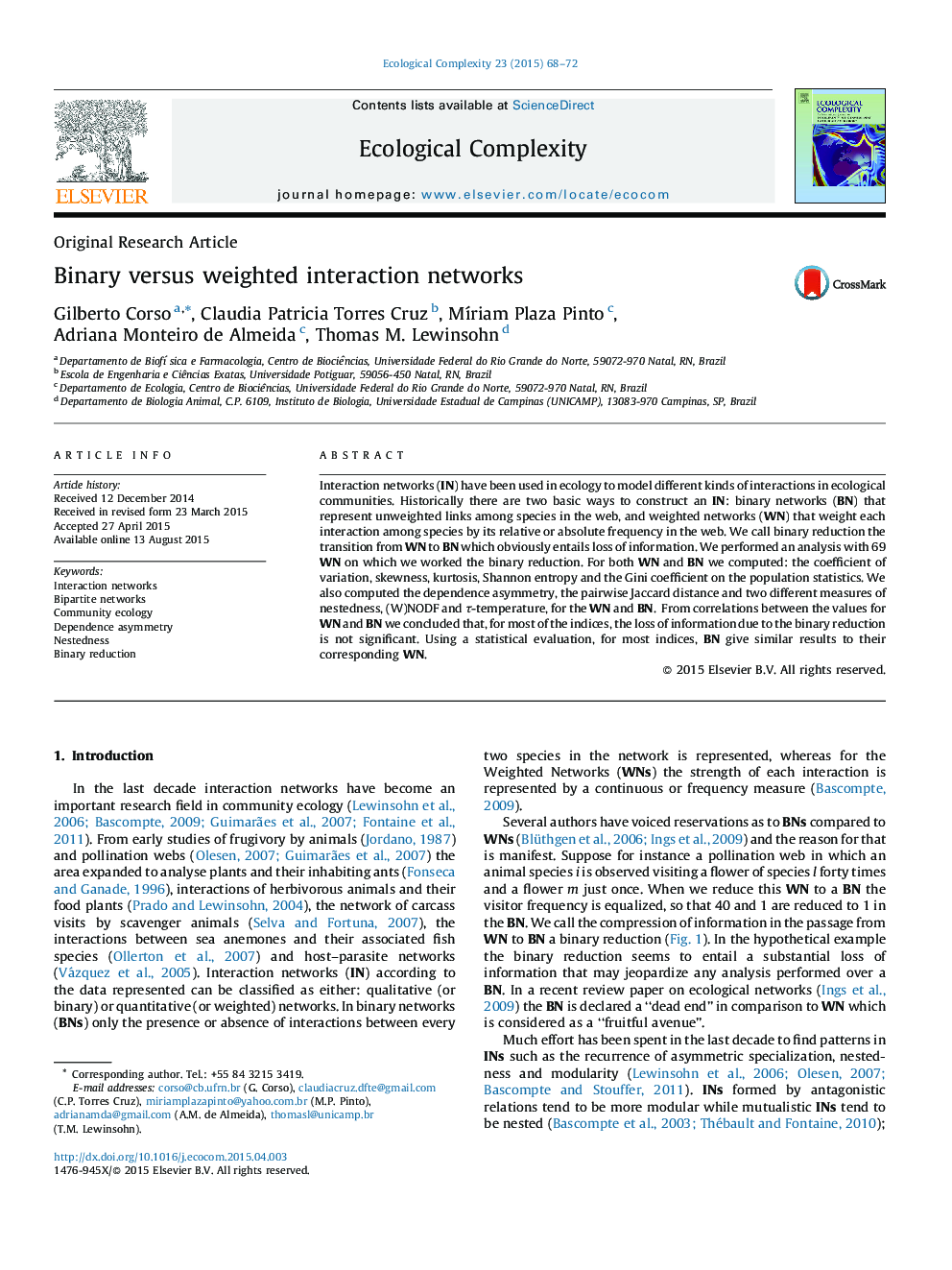| Article ID | Journal | Published Year | Pages | File Type |
|---|---|---|---|---|
| 6292496 | Ecological Complexity | 2015 | 5 Pages |
Abstract
Interaction networks (IN) have been used in ecology to model different kinds of interactions in ecological communities. Historically there are two basic ways to construct an IN: binary networks (BN) that represent unweighted links among species in the web, and weighted networks (WN) that weight each interaction among species by its relative or absolute frequency in the web. We call binary reduction the transition from WN to BN which obviously entails loss of information. We performed an analysis with 69 WN on which we worked the binary reduction. For both WN and BN we computed: the coefficient of variation, skewness, kurtosis, Shannon entropy and the Gini coefficient on the population statistics. We also computed the dependence asymmetry, the pairwise Jaccard distance and two different measures of nestedness, (W)NODF and Ï-temperature, for the WN and BN. From correlations between the values for WN and BN we concluded that, for most of the indices, the loss of information due to the binary reduction is not significant. Using a statistical evaluation, for most indices, BN give similar results to their corresponding WN.
Related Topics
Life Sciences
Agricultural and Biological Sciences
Ecology, Evolution, Behavior and Systematics
Authors
Gilberto Corso, Claudia Patricia Torres Cruz, MÃriam Plaza Pinto, Adriana Monteiro de Almeida, Thomas M. Lewinsohn,
